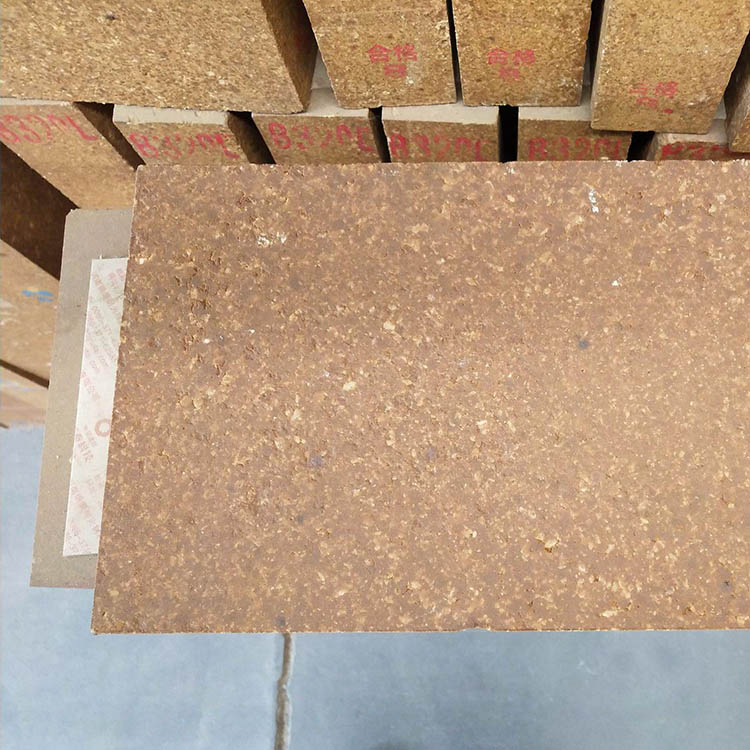
In the steel industry, the demand for high - performance refractory materials in furnaces is growing rapidly. Traditional high - alumina bricks, once the mainstay of furnace linings, are now facing significant challenges due to frequent thermal shock damage. This article aims to provide a comprehensive comparison between andalusite refractory bricks and high - alumina bricks, helping steel enterprises make informed decisions on refractory material selection.
As the steel industry continues to evolve, the operating conditions of steel furnaces have become more demanding. Rapid temperature changes during the steel - making process require refractory materials with excellent thermal shock resistance. High - alumina bricks, which have been widely used in the past, often experience thermal shock damage under such conditions. This damage not only affects the production efficiency but also increases the operation and maintenance costs.
To understand the differences between andalusite refractory bricks and high - alumina bricks, we compared them in terms of cold strength, thermal stability, and creep resistance. The following table presents the comparison data:
| Performance Indicator | Andalusite Refractory Bricks | High - Alumina Bricks |
|---|---|---|
| Cold Crushing Strength (MPa) | 100 - 120 | 80 - 100 |
| Thermal Shock Resistance (Cycles) | 20 - 30 | 10 - 15 |
| Creep Rate (%) | 0.5 - 1 | 1 - 2 |
From the data, it is clear that andalusite refractory bricks outperform high - alumina bricks in these key aspects. Higher cold crushing strength means better resistance to mechanical stress, more thermal shock resistance cycles indicate better adaptability to rapid temperature changes, and a lower creep rate ensures the long - term stability of the furnace lining.
Let's take a look at some real - world applications. A large - scale steel enterprise in [Location] replaced the high - alumina bricks in its blast furnace with andalusite refractory bricks. Before the replacement, the furnace lining needed to be repaired every 6 months, and the annual maintenance cost was approximately $500,000. After using andalusite refractory bricks, the furnace lining only needed to be repaired once a year, and the annual maintenance cost was reduced to $200,000. Moreover, the production efficiency increased by 15% due to fewer production interruptions.
Another steel plant in [Location] also reported similar results. The use of andalusite refractory bricks extended the service life of the furnace lining from 8 months to 18 months, significantly reducing the overall cost of production.
The superior performance of andalusite refractory bricks is closely related to their unique crystal structure. Andalusite has a special crystal lattice structure that can effectively absorb and disperse thermal stress. When the temperature changes rapidly, the crystal structure of andalusite can adjust itself to accommodate the volume changes caused by thermal expansion and contraction, thereby reducing the risk of cracking and damage.
To illustrate this concept more vividly, we can think of the andalusite crystal structure as a flexible net. When a force (thermal stress) is applied, the net can stretch and contract without breaking, while the structure of high - alumina bricks is more like a rigid frame that is prone to cracking under stress. The following diagram shows the difference in the crystal structures of andalusite and high - alumina:

In conclusion, andalusite refractory bricks offer significant advantages over high - alumina bricks in terms of thermal shock resistance, cold strength, and creep resistance. Through real - world case studies, we have seen their practical value in extending the furnace lining life and reducing maintenance costs. For steel enterprises looking to optimize their refractory material selection, andalusite refractory bricks are a worthy consideration.
If you are interested in learning more about the selection of refractory materials for steel furnaces, we invite you to download our Steel Furnace Refractory Material Selection White Paper. This white paper provides in - depth analysis and practical guidance to help you make the best decision for your business.


